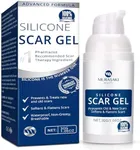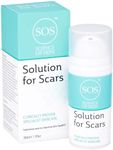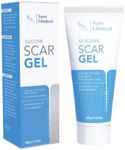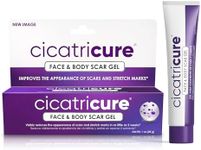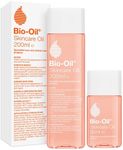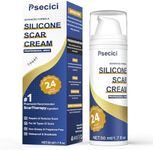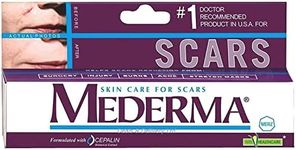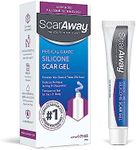Buying Guide for the Best Scar Treatment Creams
When choosing a scar treatment cream, it's important to understand that different products are formulated to address various types of scars, such as those from surgery, acne, or injuries. The right cream for you will depend on the type of scar you have, your skin type, and any specific skin concerns you may have, such as sensitivity or allergies. It's also crucial to consider how often you're willing to apply the cream and how long you're prepared to wait for results, as some treatments require consistent application over several weeks or months. Always patch test a new product to ensure it doesn't irritate your skin, and consult with a dermatologist if you have any concerns about the ingredients or the suitability of a product for your specific scar type.Active IngredientsActive ingredients in scar treatment creams are the components that work to reduce the appearance of scars. Common active ingredients include silicone, which helps to hydrate and protect the scar area, and onion extract, which is believed to reduce inflammation and discoloration. When choosing a cream, consider what your skin responds well to. If you have sensitive skin, you might want to avoid products with strong active ingredients that could cause irritation. For those with older scars, ingredients like retinoids might be beneficial as they promote cell turnover. Always check the ingredient list to ensure there are no components that you are allergic to.
Formulation TypeScar treatment creams come in various formulations, such as gels, ointments, and creams. The formulation type can affect how the product feels on your skin and how well it absorbs. Gels are often lightweight and dry quickly, making them suitable for oily skin or for use during the day. Creams are typically more moisturizing and may be better for dry or sensitive skin. Ointments are thicker and can provide a protective barrier, which might be beneficial for scars that are still healing. Consider your skin type and personal preference when choosing a formulation, as this will impact your comfort and the product's effectiveness.
Application FrequencyThe frequency with which you need to apply a scar treatment cream can vary depending on the product and the severity of the scar. Some creams require application once or twice daily, while others might be used less frequently. Consistency is key in scar treatment, so choose a product with a frequency that fits into your daily routine. If you have a busy schedule, a once-daily application might be more manageable. However, if you're dealing with a particularly stubborn scar, you might need a product that requires more frequent application for better results.
Duration of UseThe duration of use refers to how long you need to continue applying the scar treatment cream to see results. Some products may show improvements in a few weeks, while others might take several months. It's important to have realistic expectations and be patient, as scar healing is a gradual process. If you're looking for quicker results, you might opt for a product that promises visible changes in a shorter time frame. However, for long-term improvement, especially with older or more severe scars, a product that requires extended use might be necessary.
Skin Type CompatibilitySkin type compatibility is crucial when selecting a scar treatment cream, as different products are formulated to work best with certain skin types. If you have oily skin, you might prefer a non-comedogenic gel that won't clog pores. For dry skin, a cream with hydrating ingredients like hyaluronic acid or glycerin might be more suitable. Sensitive skin types should look for hypoallergenic products free from fragrances and harsh chemicals. Understanding your skin type will help you choose a product that not only treats your scar effectively but also maintains the overall health of your skin.


